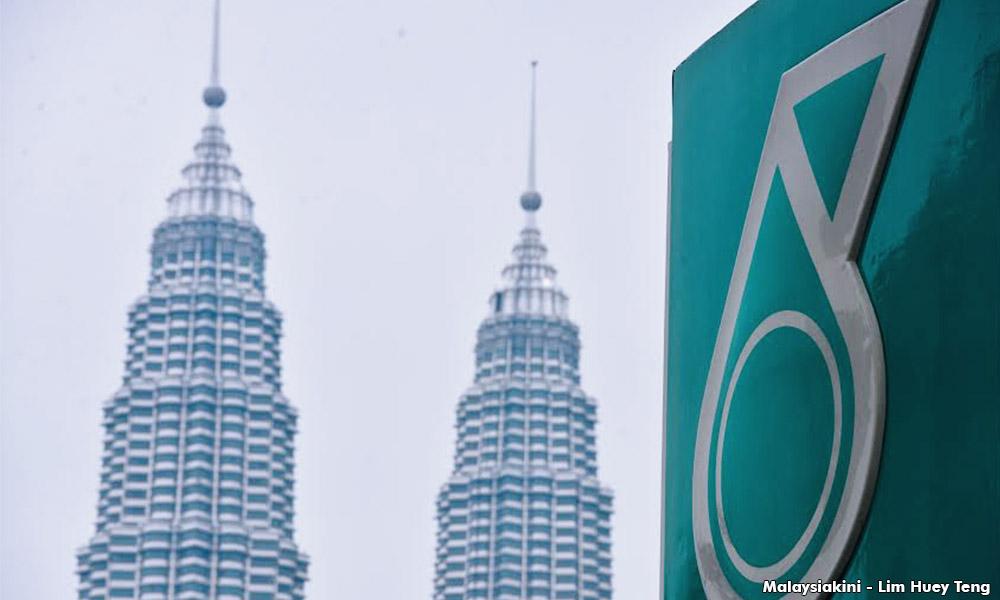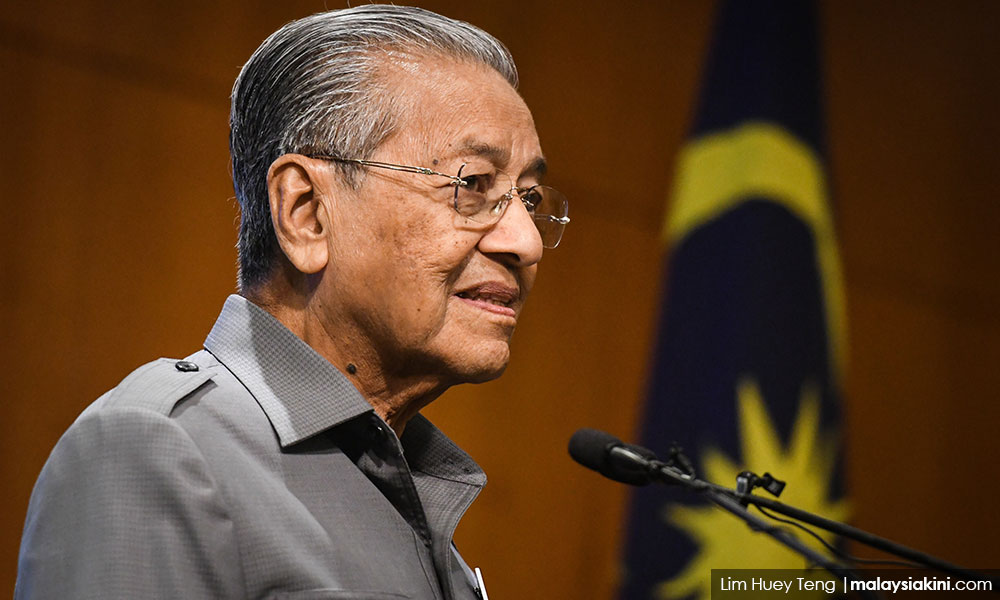COMMENT | After the alarmist alert over the country’s RM1 trillion national debt and the tear-jerking calls for patriotic citizens to donate to Tabung Harapan to plug this debt hole, we are now told that a new skyscraper, 'Tower M', is to be built to dwarf the soon-to-be tallest TRX 106.
Whatever happened to the call for austerity in government spending and the need to cut down on grandiose schemes? No prizes for guessing where the money for this latest white elephant will come from.
The skyscraper will be built by KLCC Holdings (KLCCH), the property investment arm of our prized national oil company and supposed 'sovereign wealth fund', Petronas.
During Dr Mahathir Mohamad’s first tenure, Petronas had to build what was then the tallest building Dayabumi in the 1980s and then, the Petronas Twin Towers in the 1990s. Does anyone know if there is any breathing soul in Dayabumi at the moment?
Meanwhile, the office occupancy rates and average rental in Kuala Lumpur city centre, Kuala Lumpur fringe and Selangor are expected to continue their downtrend in 2018.
Petronas, the cash cow for Dr M’s projects
Do Malaysians realise the shocking fact that we have failed to build a sizeable sovereign wealth fund like that of Norway’s (US$1 trillion in assets; it made an annual return of $131 billion in 2017 alone) simply because the substantial revenue from Petronas all these years has been squandered on grandiose projects and bailing out failed crony capitalists?
Since the 1970s, the NEP has been largely funded by the exploitation of offshore oil which, by 1985 contributed 26 percent of all government revenue when oil registered a 29.6 percent share of the major commodities export.
Tengku Razaleigh Hamzah, who was the founding chairperson and chief executive of Petronas, has been quoted as saying that Putrajaya has been using the oil and gas firm as a cash cow, especially in bailing out government-linked outfits in financial trouble.

He said that from its inception in 1974 until 2011, Petronas had paid the government RM529 billion in dividends, taxes, petroleum proceeds and export duties. He said the reliance on Petronas to help government-linked companies out of financial trouble had been going on since 1985.
As finance minister from 1976 to 1984, Razaleigh said Petronas had rescued Bank Bumiputera with an RM2.5 billion bailout in 1985, and again in 1991 when it coughed up another RM1 billion.
He said Petronas also had to rescue Mahathir’s son’s financially ailing Konsortium Perkapalan Berhad for RM2 billion in 1997. He added that Petronas was made to underwrite the construction of the Twin Towers, located in the heart of Kuala Lumpur, for RM6 billion and the building of the extravagant Putrajaya, the administrative capital of the federal government, for RM22 billion.
He said: "This amount could have been used more productively to fund a national pension programme for Malaysians, as has been done by a certain Scandinavian country."
Razaleigh said the exorbitant amount of the bailout and construction of these projects that was forced onto Petronas had deprived the company of the much-needed cash build-up for reinvestment, which would ensure its business sustainability.
According to him, since 1997 the subsidies to the national power supplier, the independent power producers and some other non-power outfits amounted to RM136.5 billion. And while these power producers continued to enjoy subsidised fuel price, the petroleum subsidy to the consumers – which purportedly cost the government RM14 billion in 2011 – was partly discontinued.
All in all, Barry Wain in Malaysian Maverick claimed that during Mahathir’s term in office from 1981 to 2003, the prime minister lost or squandered RM100 billion through mismanagement, corruption and financial scandals. If it had not been for the fortuitous outflow of oil, most of the prestige projects associated with the Mahathir era would not have been possible.
During Abdullah Ahmad Badawi’s term as prime minister, the retired Mahathir was angry with Badawi for suspending the construction of a monorail in Putrajaya (and the crooked bridge to Singapore) because of fiscal constraints. Mahathir continued to insist that Petronas was making record profits.
The profligate spending on all these grandiose projects during Mahathir’s reign has left little for reinvestment and social services for the present and future generations as a “sovereign wealth fund” such as Petronas is expected to accomplish:

As Chris Armstrong says in Sovereign Wealth Funds and Global Justice: “Insofar as ethical debates have begun to touch on how the assets of such funds should be distributed, they have tended to ask how these should be distributed internally, to citizens of the countries in question.
"Sovereign wealth funds are the creation of sovereigns, after all, and we might think that the first duty of a sovereign is to its people."
Tell that to the East Malaysians
Not surprisingly, our East Malaysian brethren are not pleased to hear that our precious oil revenue will be siphoned into building 'Tower M'. Before the last general elections, East Malaysians were told they should have a bigger share of Petronas’ revenue of which they had been deprived by the BN government all these years. How are they supposed to react to this news of Petronas building another monument to megalomania?
Sabah and Sarawak politicians and activists have long held that both states should get a fairer share of its oil and gas resources, pointing to the Malaysia Agreement of 1963 and income disparities between the Borneo states and peninsular Malaysia, and rightly so. They also insist that the Pan-Borneo Highway, good roads, hospitals and schools are more urgent than another skyscraper in Kuala Lumpur.
Urgent need for transparency in Petronas’ accounts
Petronas belongs to the Malaysian people and yet through the years of profligate spending and bailing out failed crony capitalists, there is no transparency in its accounts. Malaysia’s official accounts do not show how Petronas’ money is being spent – and the government has steadfastly refused to disclose any details about that.
Official data show Petronas payments to the state more than doubled between 2005 and 2011 as oil prices soared. Malaysia’s spending swelled too, widening the budget deficit even though revenues rose. But Malaysia would not disclose what the Petronas money is being spent on. Petronas’ CEO and board, as we know, serve at the pleasure of the prime minister.
Transparency International has listed these key recommendations for Petronas: to publicly disclose exhaustive lists of subsidiaries, affiliates, joint ventures and other associated entities independent of their materiality status; and to disclose key financial information on a country-by-country basis.

The new Finance Minister has waxed lyrical about transparency in the “new” Malaysia. He can start by making Petronas’ accounts transparent and accountable to Parliament.
Having said that, I am reminded by Barry Wain that: “Not required to disclose its financial accounts, Petronas reported by law to the prime minister rather than the finance minister as might be expected.
"It was Mahathir’s favourite piggy bank, to be raided in emergencies and on other special occasions.”
Will any of the peoples’ representatives in the new Parliament champion this urgent cause of the Malaysian people?
Until the 'New Malaysian' government gets started with making the accounts of Petronas transparent, please spare us the expense of yet another dysfunctional erected structure in the already claustrophobic Kuala Lumpur city centre.
KUA KIA SOONG is adviser to Suaram.
The views expressed here are those of the author/contributor and do not necessarily represent the views of Malaysiakini.

